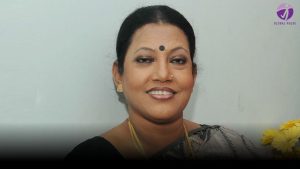“They resemble chocolate truffles, but don’t be tempted to eat them,” quips Jean Mason, the Cook Islands Library and Museum curator, as she opens a display cabinet and retrieves a black, knobbly rock.
The object she clutches could significantly influence the trajectory of this Pacific nation.
Scientists call it a polymetallic nodule formed over thousands of years by accumulating minerals on the ocean floor.
Rich in cobalt, nickel, and manganese, these ancient formations have become increasingly valuable as the metals are essential in batteries that fuel contemporary technology, including electric vehicles and smartphones.
The low-lying Pacific Islands, recognized as some of the most vulnerable nations to climate change, have increasingly found themselves at the center of growing tensions.
As sea levels continue to rise, the ocean—referred to as Moana in Māori and various Polynesian languages—poses a significant threat while simultaneously serving as a vital resource.
The Cook Islands, known for their stunning turquoise waters that attract tourists, are now setting their sights on deeper exploration. They will target depths of up to 6,000 meters (19,685 feet) to access valuable nodules beneath the ocean floor.
Prime Minister Mark Brown is championing a personal initiative that he believes has the potential to transform the nation comprised of 15 volcanic islands in the southern Pacific.
There is optimism that the revenue generated from these metals may result in a level of prosperity previously unimagined by the islanders.
The potential benefits of deep-sea mining could come at a significant environmental cost.
Advocates argue that extracting these nodules for renewable energy applications will facilitate the global shift away from fossil fuels. There is a prevailing belief that this method is less invasive than traditional land mining practices.
However, detractors contend that significant uncertainty remains regarding the consequences of extracting resources from one of the planet’s final pristine areas. Calls are growing for a moratorium on deep-sea mining, with advocates emphasising the need for further research into its potential impacts on marine life and the broader oceanic ecosystem.
Jean recalls that the nodules were primarily regarded as materials suitable for crafting knife blades during her childhood.
“The emergence of cell phones, wind turbines, and electric cars was unforeseen.”
The topic of nodules has become a focal point in family discussions, with Jean expressing strong support for their mining. Her spouse works as a lawyer for a company where the government granted exploration licenses.
The library where she is employed is filled with holiday reads left behind or donated by tourists. This influx of literature reflects the significant impact of tourism on the economy, constituting over 70% of the country’s GDP.
The collection features a comprehensive newspaper archive.
Jean thrusts a photocopy of an article from the Cook Islands News into my hand. The document dates back to 1974 and features a headline that states, “100% concentration of manganese nodules.”
“The discussion surrounding this issue has spanned over five decades, suggesting the time for a moratorium has ended.”
Gold can be found in the oceans
The Pacific Ocean spans nearly one-third of the Earth’s surface. The nodules embedded within it have been recognised since the 19th Century.
In the 1960s, American geologist John L. Mero released a book arguing that the seabed could fulfil a significant portion of the world’s mineral requirements.
The process could be more straightforward and inexpensive. However, the surge in metal prices, particularly nickel, in 2008 made it appear more attractive.
Then the Covid pandemic emerged. The departure of tourists has led to a significant decline in revenue.
In light of the challenges posed by climate change, including rising sea levels and erratic weather patterns, the nation swiftly recognised the necessity for alternative sources of support.
The Seabeds Minerals Authority of the Cook Islands has estimated that approximately 12 billion wet tonnes of polymetallic nodules exist within their maritime boundaries.
Some contend that seabed mining lacks financial viability. As technology advances at an unprecedented pace, the demand for these metals could diminish before they even come to market.
However, individuals are willing to engage. In 2022, the Cook Islands issued three licenses to companies, allowing them to begin exploring the potential for deep-sea mining.
They are currently collaborating with scientists to investigate the environmental impact.
Every action we take in life carries some level of risk. “If you’re seeking zero risk, your best option is to confine yourself to a small room surrounded by cotton wool,” states Hans Smit, the head of Moana Minerals, an exploration licence-holding company.
“Our lifestyle comes with a cost.” A significant shift in our current practices is imperative to halt mining and the extraction of various metals.
Hans, originally from South Africa, has relocated to join the local community. He views the deep-sea metals as an “incredible resource” with the potential to benefit the islanders.
Amid increasing pressure to postpone deep-sea mining activities until the International Seabed Authority establishes regulations, it is essential to note that this call pertains solely to international waters.
The Cook Islands maintain significant reserves within their national waters, specifically in their exclusive economic zone (EEZ), which allows them to proceed independently with their plans.
“We are often referred to as small-island developing states, but we prefer to identify as large ocean states,” remarks Rima Brown, a young Cook Islander with a degree in geography, who humorously describes herself as the poster child for deep-sea mining.
Rima is employed by the Seabed Minerals Authority, and she dedicates a significant portion of her time to the intricate task of mapping the sea bed.
“Despite covering just 200 square kilometres in land area, we boast an exclusive economic zone that spans nearly 2 million square kilometres,” she states.
This figure is comparable to that of Mexico
“It’s the only resource we have,” Jean stated.
Industrialised nations are damaging our atmosphere, yet they dare to suggest that we leave our resources buried in the seabed. It is outrageous that they would restrict our ability to access our resources.
Opposition to deep-sea mining in the Cook Islands is not limited to external parties.
Is it a strategy for future resilience or a critical misstep?
Off the coast of Rarotonga, the largest and most populous of the Cook Islands, a diverse group of surfers, kayakers, and swimmers congregates around a sizable vaka, a traditional Polynesian catamaran.
“Te Moana, Te Moana, Paruru ia ra, Paruru ia ra,” the passengers chant in unison, calling for the protection of their ocean in the Māori language.
“We are requesting additional time for thorough independent research and for our community to gain a better understanding of potential risks,” states Alanah Matamaru Smith, a representative of the Te Ipukarea Society, an environmental organisation in Rarotonga.
Infrastructure is being established on Rarotonga, and accommodations are being prepared for offshore mining companies. Additionally, draft mining regulations have already been implemented. Currently, actions convey a much stronger message than words.
Prime Minister Mark Brown, who is at the forefront of this initiative, also holds the positions of tourism minister and seabed minerals minister. The individual has expressed a strong desire for the Cook Islands to be prominent in the industry.
“It offers our children the chance to attend any university globally without the burden of student loans,” states Brown, who envisions emulating Norway’s model by creating a sovereign wealth fund.
“It provides access to the kind of health care that individuals currently seek in New Zealand or Australia.” The initiative allows young individuals to lead rewarding lives in our nation, eliminating the need to seek opportunities abroad in an industry currently absent domestically.
In response to critics who suggest that a nation facing the challenges of climate change may contribute to the issue, he contends that his focus is on identifying viable solutions.
“For the past two decades, securing financing from the major emitting nations has proven elusive, prompting a need to explore alternative strategies for self-protection.”
However, activist June Hosking remains sceptical.
Hailing from the remote island of Mauke, which boasts a modest population of only 300 residents, she represents a unique slice of life in this lesser-known region.
The government has initiated consultations with residents throughout the islands and the significant diaspora in New Zealand. However, according to her, concerns regarding the potential drawbacks of the industry remain largely unaddressed.
“Residents of the outer islands tend to avoid stirring up controversy,” she remarks. “During these consultations, only about three individuals tend to voice their opinions.”
June notes that this is the essence of island life, and many refer to the prime minister as Mark. She claims that her husband’s cousin is married to his wife.
Despite her family connections, she is often perceived as a troublemaker for her tendency to ask probing questions.
“When residents express their neutrality on deep-sea mining, she responds with a chuckle, ‘You can’t drive very far in neutral.’
“At certain points in life, it becomes imperative to take a definitive stance on important issues – the future is at stake.”













